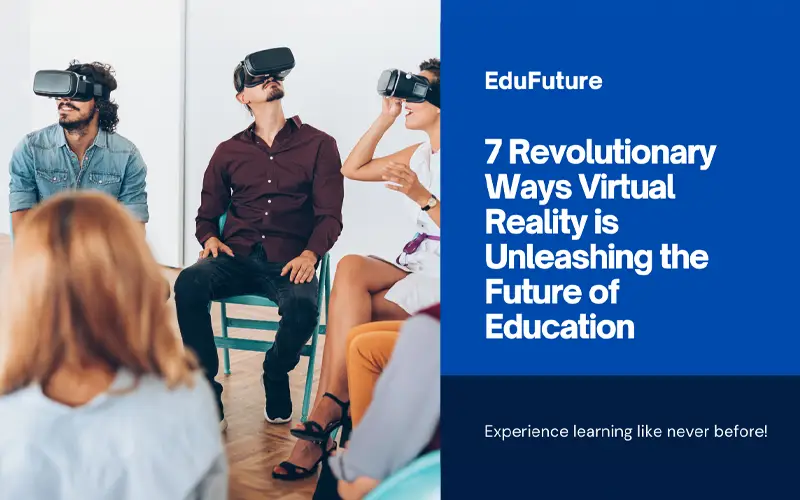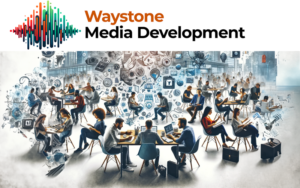The dawn of Virtual Reality (VR) in education marks a groundbreaking shift towards an era of immersive and interactive learning. Virtual Reality in Education is not merely a technological advancement; it is a visionary leap forward, transforming the static classroom environment into a vibrant and captivating world of learning. This journey into the realms of VR explores its profound impact on education, offering insights into its potential to revolutionize how knowledge is imparted and experienced.
Virtual Reality in Education: A New Pedagogical Frontier
Virtual Reality introduces a new frontier in pedagogy, offering a three-dimensional educational experience that transcends traditional learning barriers. This innovative approach not only captivates students’ imagination but also significantly enhances their understanding and retention of information. From interactive simulations to exploring virtual worlds, VR brings subjects to life, providing a learning experience that is both engaging and effective.
Transforming Engagement and Knowledge Retention
Virtual Reality in Education is a game-changer in enhancing student engagement and knowledge retention. Unlike passive learning methods that often lead to disengagement, VR fosters an active learning environment that encourages exploration and curiosity. This dynamic approach to education not only improves comprehension but also ensures that knowledge is retained longer, making learning a more fulfilling experience.
Overcoming the Constraints of Physical Classrooms
The advent of VR technology transcends the physical limitations of traditional classrooms. Virtual Reality in Education enables students to undertake virtual expeditions to distant lands, historical eras, and even outer space. This unparalleled access to diverse learning environments makes education more inclusive and accessible, offering all students the opportunity to explore and learn without boundaries.
Cultivating Essential Skills for the Modern World
Beyond academic achievements, Virtual Reality in Education plays a pivotal role in developing critical life skills such as problem-solving, creativity, and teamwork. Through interactive VR projects and simulations, students learn to navigate challenges, think critically, and collaborate with peers, preparing them for the complexities of the modern world.
Navigating the Challenges of Accessibility and Cost
Despite its potential, the integration of Virtual Reality in Education faces hurdles, particularly in terms of accessibility and cost. Ensuring that VR technology is affordable and accessible to schools across different socio-economic backgrounds is essential for its successful and equitable implementation in education systems worldwide.
Empowering Future Generations
Virtual Reality in Education is not just preparing students for the future; it is shaping the future itself. By immersing students in highly interactive and realistic environments, VR equips them with the skills and knowledge necessary to thrive in an increasingly digital world. As we stand on the brink of a technological revolution, VR in education emerges as a key player in empowering future generations.
Virtual Reality in Education is at the forefront of an educational revolution, transforming the way we learn, teach, and perceive the world around us. As this technology becomes more refined and accessible, it promises to unlock unprecedented possibilities for educational engagement and achievement. The future of education is here, and it is virtual, immersive, and boundless.
FAQs
- How does Virtual Reality in Education enhance learning?
Virtual Reality (VR) enhances learning by creating immersive and interactive environments that allow students to experience their subjects in a way that traditional educational tools cannot. This hands-on approach leads to deeper understanding, increased retention, and a more engaging learning experience. VR can simulate complex, real-world scenarios, making abstract concepts tangible and bridging the gap between theory and practice.
- What are the benefits of using VR in classrooms?
The benefits of using VR in classrooms are manifold. It increases student engagement by making learning more interactive and fun. VR aids in visual learning, allowing students to visualize concepts that are difficult to grasp through textbooks. It also promotes active rather than passive learning, encourages collaboration among students during group VR experiences, and can be tailored to suit various learning styles and needs.
- Can Virtual Reality in Education improve student engagement?
Yes, Virtual Reality can significantly improve student engagement. By immersing students in the learning material, VR captures their attention in a way that lectures and traditional media cannot. This immersion leads to increased curiosity and interest in the subject matter. Furthermore, VR experiences are often memorable, meaning students are more likely to retain information and stay engaged with the coursework over time.
- How does VR technology overcome the limitations of traditional education?
VR technology overcomes the limitations of traditional education by providing experiential learning opportunities that are not possible in a standard classroom setting. It eliminates geographical and physical constraints, enabling students to visit historical sites, explore different cultures, or conduct complex science experiments virtually. VR also caters to different learning styles, offering personalized learning experiences that can adapt to the learner’s pace and preferences.
- What challenges face the implementation of VR in education?
The challenges facing the implementation of VR in education include the high cost of VR equipment, the need for technical infrastructure and support, and the requirement for teacher training on how to effectively integrate VR into their teaching. Additionally, there are concerns about equitable access to VR technology for all students, including those from lower socio-economic backgrounds, and ensuring content is inclusive and diverse.
- How is Virtual Reality preparing students for the future?
Virtual Reality is preparing students for the future by equipping them with critical 21st-century skills, including problem-solving, critical thinking, and technological literacy. As digital technologies become more integrated into all aspects of life, familiarity with VR and other immersive technologies will be essential. Moreover, VR experiences can inspire interest in STEM fields, creativity, and innovation, all of which are key drivers of future job markets.
References:
Built In. (n.d.). Virtual Reality in Education: Benefits, Uses & Examples. Retrieved from https://builtin.com/edtech/virtual-reality-in-education
American University. (n.d.). Benefits of Virtual Reality in Education: Tools & Resources. Retrieved from https://soeonline.american.edu/blog/virtual-reality-in-education
To Learn More:
Virtual Reality in Media: Transforming Storytelling and Interactive Experiences





